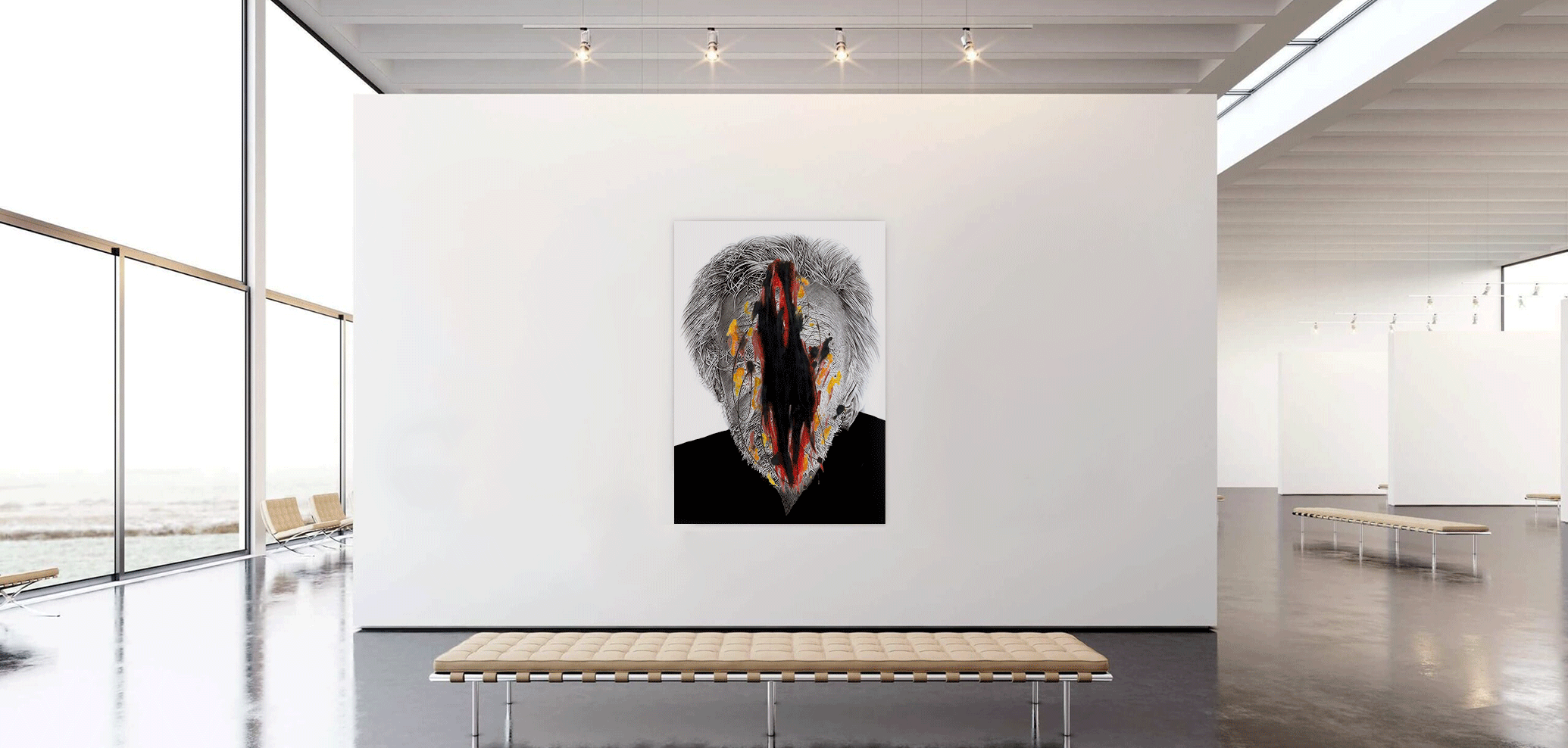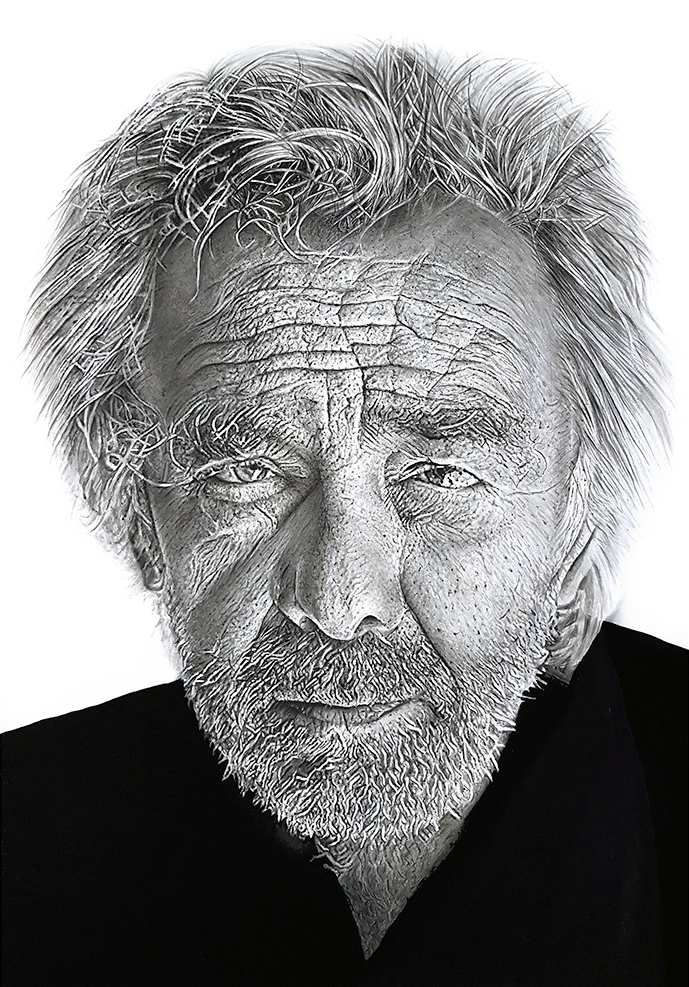„I consider artistic creation to be first an inner monologue. A little like the dream continues in deep sleep,
the covering of a painting is the continuation of this monologue in silence.“ – Arnulf Rainer
„I consider artistic creation to be first an inner monologue. A little like the dream continues in deep sleep, the covering of
a painting is the continuation of this monologue in silence.“
– Arnulf Rainer


01. About
The objective was to design and make a portrait of Arnulf Rainer that would be placed on the facade of his museum in Baden, Austria.
Arnulf Rainer is undoubtedly one of the most remarkable abstract artists of the 20th century. As one of the founders of Informalism in Austria, he became famous for his his original technique of „over-painting“, which he applied not only on well-known photographic portraits and self-portraits, but also on reproductions of significant works of art or even original artworks by Van Gogh, Goya or Rembrandt. He used fast, expressive brushstrokes or his own fingers to redraw, cover or cross out the paintings or photographies, resulting in surrealist, sometimes even spiritual art experience.
01. About
The objective was to design and make a portrait of Arnulf Rainer that would be placed on the facade of his museum in Baden, Austria.
Arnulf Rainer is undoubtedly one of the most remarkable abstract artists of the 20th century. As one of the founders of Informalism in Austria, he became famous for his his original technique of „over-painting“, which he applied not only on well-known photographic portraits and self-portraits, but also on reproductions of significant works of art or even original artworks by Van Gogh, Goya or Rembrandt. He used fast, expressive brushstrokes or his own fingers to redraw, cover or cross out the paintings or photographies, resulting in surrealist, sometimes even spiritual art experience.


02. A Monumental Painting
The hyperrealistic portrait of the artist was made using acrylic painting technique. The painting’s dimensions are 60×90 cm (23.6×35.4 in). It’s enlarged monumental version was supposed to be placed on the facade of the museum.
Since the artist often used black&white photographies as a basis for his artworks, the portrait was made in photographic realism. The acrylic technique made it possible to create layers that would subsequently depict details and structure of the artist’s face, which resulted in naturalistic effect.
02. A Monumental Painting
The hyperrealistic portrait of the artist was made using acrylic painting technique. The painting’s dimensions are 60×90 cm (23.6×35.4 in). It’s enlarged monumental version was supposed to be placed on the facade of the museum.
Since the artist often used black&white photographies as a basis for his artworks, the portrait was made in photographic realism. The acrylic technique made it possible to create layers that would subsequently depict details and structure of the artist’s face, which resulted in naturalistic effect.


03. A Painting as a Part of the Facade
The portrait as a part of the facade was meant to correspond with the artist’s work. Therefore we used brushstrokes and patterns distracted from Rainer’s original artworks and projected them on the facade as a part of the painting.
Rainer’s face is depicted in the name of nobility and significance, with regard to artist’s status and age. Although the concept is based on Rainer’s work, the overall result was supposed to evoke harmony and serenity, in honor to one of the greatest Austrian artists of all time.
03. A Painting as a Part of the Facade
The portrait as a part of the facade was meant to correspond with the artist’s work. Therefore we used brushstrokes and patterns distracted from Rainer’s original artworks and projected them on the facade as a part of the painting.
Rainer’s face is depicted in the name of nobility and significance, with regard to artist’s status and age. Although the concept is based on Rainer’s work, the overall result was supposed to evoke harmony and serenity, in honor to one of the greatest Austrian artists of all time.






